Best-Practice-Documentation: Project Medieval Maritime Predation
DMMP project phase 10/01/2022 – 01/30/2023
Persons involved
project: Database of Medieval Maritime Predation (link to database DMMP)
project group: Nikolas Jaspert (ZEGK), Victòria Burguera (ZEGK), Laurin Herberich (ZEGK)
Timeline
October 22
-
- Design and planning phase of the narrow project group
- Presentation to the stakeholders of the University Library (UB)
- Setup of test instance of DMMP on server space of UB
- Meeting of all members of the project group
- Establishment of a Gitlab on the part of the UB
- Meeting of all involved persons
November 22
-
- four weekly meetings of the extended project group
until end of January 23
-
- Work on the model of the DMMP (exchange on Gitlab and UB)
- Interim status meeting of the narrower project group with HCDH
- Resumption of closer support by the UB
- Creation of a function-oriented prototype of the DMMP
by mid-Feb-23
-
- Modeling of a DMMP alpha version
Knowledge and data management
It was agreed in the first meeting of the project group to first prepare a preliminary, visual representation of the database organization analogously on DIN A3 sheets.
Subsequently, the schematics of the DIN A3 sheets (see Figure 1) were converted into OneNote documents for more flexible editing. The model fixed in OneNote was then transferred to an Excel sheet (see Figure 2), which was open to the extended project group (UB, ZEGK, HCDH, SSC) for annotation and editing. This facilitated the modeling of the system enormously, since all project group members had simultaneous insight into the most current model, and questions from both the inner group of historians and the group of computer scientists involved could be answered promptly via Gitlab or mail. Thus, the clarity of the model could be guaranteed at any time and the organization of the data could be made transparent.
organization of the data
Figure 1 - Example of a DIN A3 sheet of paper
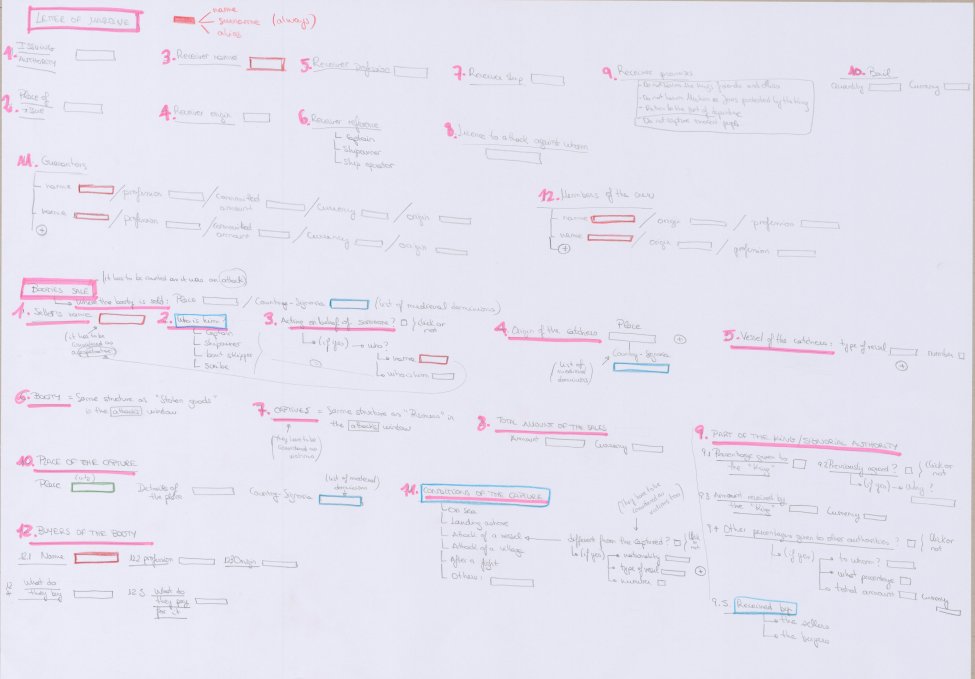
Figure 2 - Example of an Excel sheet
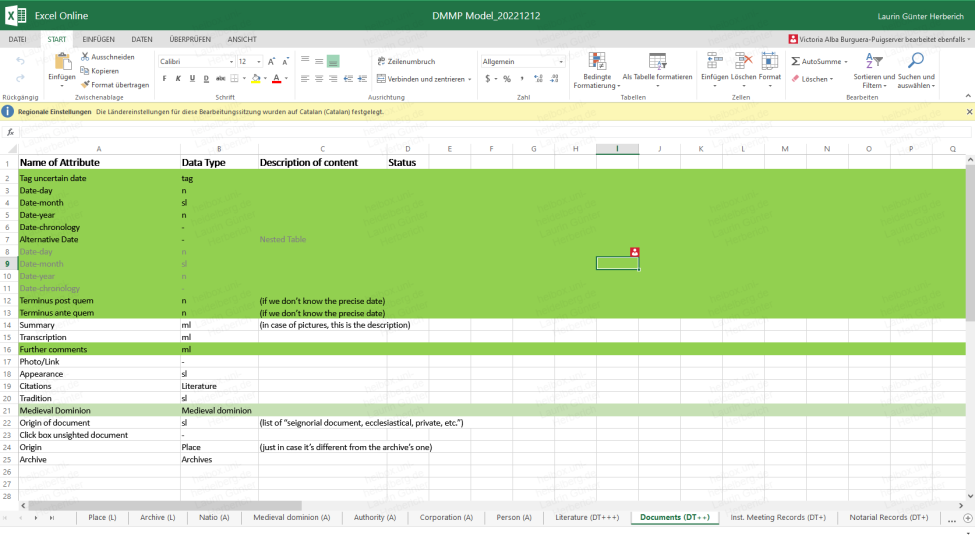
The digital asset management software chosen was easydb, which is operated by the UB. The reasons for this were that the UB’s computer scientists have already gained experience with it and are already experienced in comparable project designs. Another advantage is the possibility of hierarchical as well as heterarchical representation of objects; complex questions to the respective data can be answered exhaustively at best by multidirectional linking of objects.
The database model was set up on the UB’s server space, and input screens were made available to the narrow project group and the UB’s IT department. There was a further development of the system – most helpful for the modeling work of the project group was the differentiation of different object types and the general searchability of the data sets.
general searchability of the data sets.
The possibilities of GIS implementation were explored at the end of October 22 as well as the related involvement of the programmers of the Scientific Software Center (SSC).
Weekly meetings of the extended project group in November 22 addressed the key issues of how relational links between documents, events, and people could be made and represented in easydb; related to these issues were the ways in which project-specific document types should and could be entered into the database.
By January 23, an organizational prototype of the DMMP was created in an Excel spreadsheet and the issue of reciprocal linking of prosopographic data was discussed at a meeting of the extended project group on the same day. Modeling of the DMMP alpha version will be targeted
based on the Excel draft by mid-February 23.
Collaboration/communication within the project
At the first meeting of the restricted project group at the beginning of October 22, basic communication parameters were defined. Among other things, the participants agreed to meet once a week to discuss the project.
weekly meeting to exchange information about the project.
The further work was expressed in the common procedure within the narrower project group, whose results were exchanged with the extended project group and further involved persons; from all sides a close communication was aimed for an actual exchange, above all regarding the development of the data base.
From October 22 on, programming-specific communication was ensured by setting up the Gitlab project; during the work phase from November 22 to January 23 inclusive, mutual exchange and support were ensured by Gitlab and e-mail communication.
Two interim status meetings were held between the narrower and wider project groups, allowing mutual progress, database drafts and issues to be communicated and reconciled. Since mid-January 23, there has been close interaction with UB due to the PreAlpha and Alpha versions of the DMMP.
DMMP: Project Phase 01/30 – 07/30/2023
Persons involved
Project Group: Nikolas Jaspert (ZEGK), Victòria Burguera (ZEGK), Silvia Girona Espino (ZEGK), Laurin Herberich (ZEGK)
Extended Project Group: Victòria Burguera (ZEGK), Jonathan Gaede (FITCH), Laurin Herberich (ZEGK), Nikolas Jaspert (ZEGK), Dominic Kempf (SSC), Leonhard Maylein (UB), Florian Nieser (HCDH), Kilian Schultes (ZEGK), Nils Weiher (UB)
Timeline of the Project
February 2023
-
- Alpha Version of Zotero Literature Plugin courtesy of the SSC
- IT-team begins implementation of Excel data model into easydb
March 2023
-
- Autocomplete Fields identified and added
- Data entry process: From the document to literature, literature only to feature as a linkable object and not as a root for the linkage of other objects
April 2023
-
- Project group starts checking already implemented object types
- Two thirds of the data model are implemented into easydb
May 2023
-
- Domain is agreed upon: http://dmmp.ub.uni-heidelberg.de/
- Project group continues checking already implemented object types, while improving on and adding to the excel model
- Event OT: Spawning any event from any document, also from map, painting, and material object
- DMMP alpha is ready: IT-team finishes implementation of Excel model into easydb
- Project group and IT-team begin to streamline the DMMP alpha’s model, i.e. which fields can/should be used in multiple document/event types and which fields should be repeatable
- Silvia Girona Espino (ZEGK) joins the project group
June 2023
-
- “Helper Object” solution for “DT/EV” issue is implemented
- “Helper Object” solution for “Missing Person” issue is implemented
- Decision to enter vessels is made
- “Documents first” entry process is agreed upon
July 2023
-
- Milestone reached: DMMP Beta is ready for data entry after wipe of test data and restructuring of alpha version
- Project group hands over low and high priority lists of corrections to IT-team
- Project group begins mass data entry
Knowledge and data management
At the end of the project’s phase one in late February 2023, the project group in close coordination with the UB’s IT-team laid out an action plan for the time period until 31 July 2023. Phase two was to end with the implementation of the Excel model into easydb and thus an alpha version of the database. Phase three was to conclude with a working beta of the DMMP.
By late February 2023 the UB’s IT-team started to implement the Excel draft containing the organisational prototype of the DMMP into easydb. During the implementation process, the project group already prepared update 1.0 of the DMMP’s projected alpha version. Apart from added features like the Zotero literature plugin realised by the SSC, update 1.0 changed the model in two significant ways. The first change was to to reduce literature as a “non spawner” (NSP) and limit the data entry process to the document and event object types. Second, any event was to be spawnable from any document. Rather than to wait for the completion of the implementation process, the project group in conjunction with the IT-team decided to implement update 1.0 of the projected DMMP alpha simultaneously to avoid doubling work steps. During this prolonged phase, the project group started to scrutinise the already implemented object types. Phase two ended with the full implementation of not only the Excel model but also Update 1.0 into easydb on 24 May 2023.
Phase three kicked off with an addition of the project group. Silvia Girona Espino joined as project assistant and started to collect geodata on medieval harbours in an Excel sheet to be mass imported into the DMMP as place objects. Furthermore the modus operandi of project group and IT-team changed. Improving the DMMP’s model towards a working beta version ready for large scale data entry, required much closer coordination. Thus, almost twice a week throughout June and early July both groups met to weed out implementation errors and to streamline the model. The latter involved determining the which fields could be utilised in multiple document and event object types as well as identifying fields that should be repeatable in so called nested tables. The latter was of special importance because of the difficulty attached with turning non-repeatable fields into repeatable ones after data entry had already begun.
Figure 1
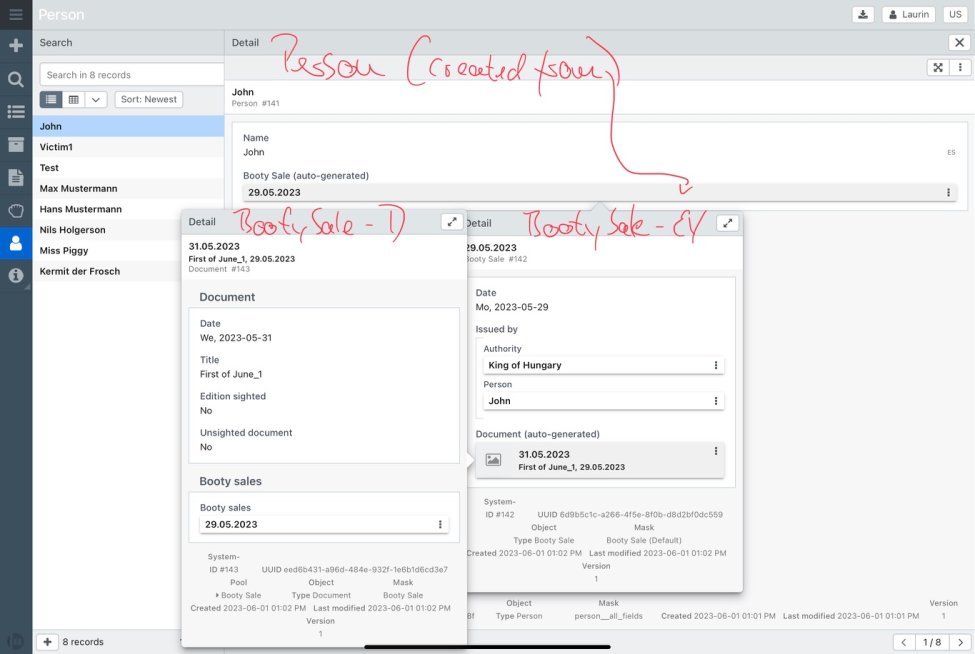
Figure 2
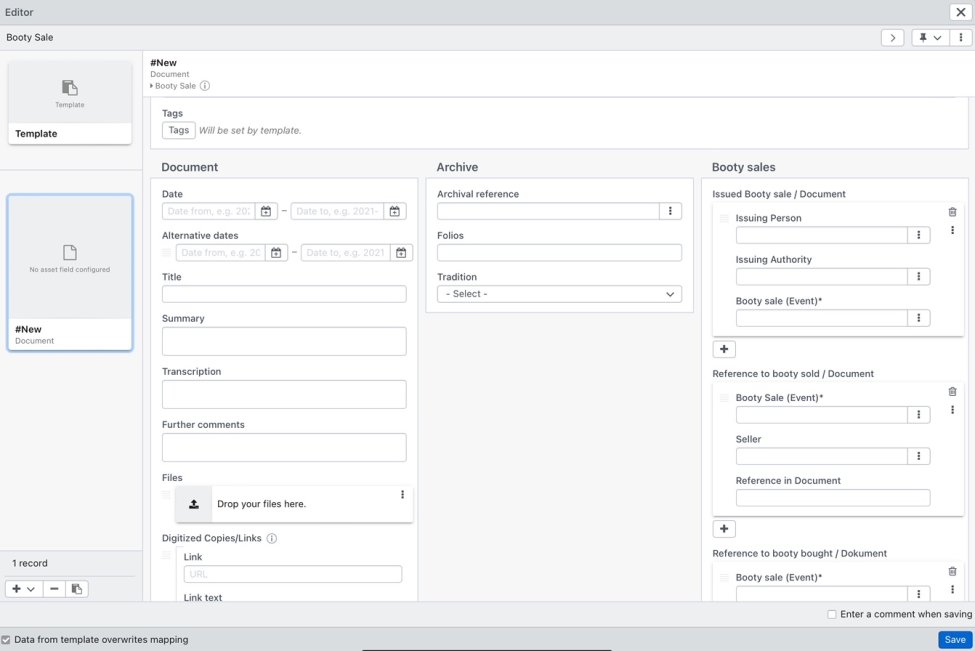
Phase three further marked a big step forward for the database as two major findability issues were found and solved. First was the “DT/EV” issue caused by the DT/EV object type, which was until then the fourth of the DMMP’s OT’s (event OT, document OT, NSP, document/event OT). The DT/EV OT was set up as one part document containing no information on NSPs mentioned in the document (Place, Natio, Dominion, Authority, Corporation, Type of Vessel, Goods, Currency and crucially Person) and one part event which contained all the NSP information to avoid entering it twice. But the lack of NSP information in the document part resulted in these documents not being linked to, e.g. persons, and thus not appearing when searching a person. To be able to track the documentary food print of a person, project group and IT-team agreed to discontinue the DT/EV object type, to separate the existing DT/EV OT’s into document OT’s and event OT’s, and to avoid doubling information nonetheless by employing a tool called “Helper Object”. This feature of the easydb serves as a container for two OT’s which it then links and displays together, thus solving the findability problem caused by the “DT/EV” issue. The “Helper Object” tool prooved to be the solution for the second findability issue as well. This “Missing Person” issue appeared when searching for a person which appeared in an event linked to a document but was not linked to said document. Not only did searching for a person result in an incomplete documentary record but finding the document the person was originally mentioned in became impossible once an event had been linked to several documents. Using the “Helper Object” the IT-team was able to link person and document in these cases as well, thus ensuring that every search for a person is going to display their full documentary record.
A third issue concerned scientific credibility. Until late June, data entry was possible beginning with a document OT as well as an event OT. Thus, the interpretation of historical documents in the form of an event created as a result of historical research could have stood without distinction next to said documents as a seemingly historical “fact”. Hence, to keep research results separate from historical documents, the decision was made to root the data entry process in the document object type alone. To keep track of the documental origin of historical information in the DMMP, every entry was to begin with the creation of a document from which the various other object types were to be spawned. When the implementation of the “documents first” entry process and the “Helper Object” solution were agreed upon on 23 June, the project group additionally opted to track individual vessels as a NSP OT as well. Once all changes had been implemented, test data was entered to ensure the functionality of the solutions. Despite the already high workload of the IT-team, the latter adapted smaller changes deemed necessary after the test data trials and delivered a working beta of the DMMP on 12 July 2023.
Since then, the IT-team has been working on the chronology plugin, which will simplify later visualisation of historical data recorded according to different calendars. The project group has meanwhile begun data entry into the DMMP.
Figure 3
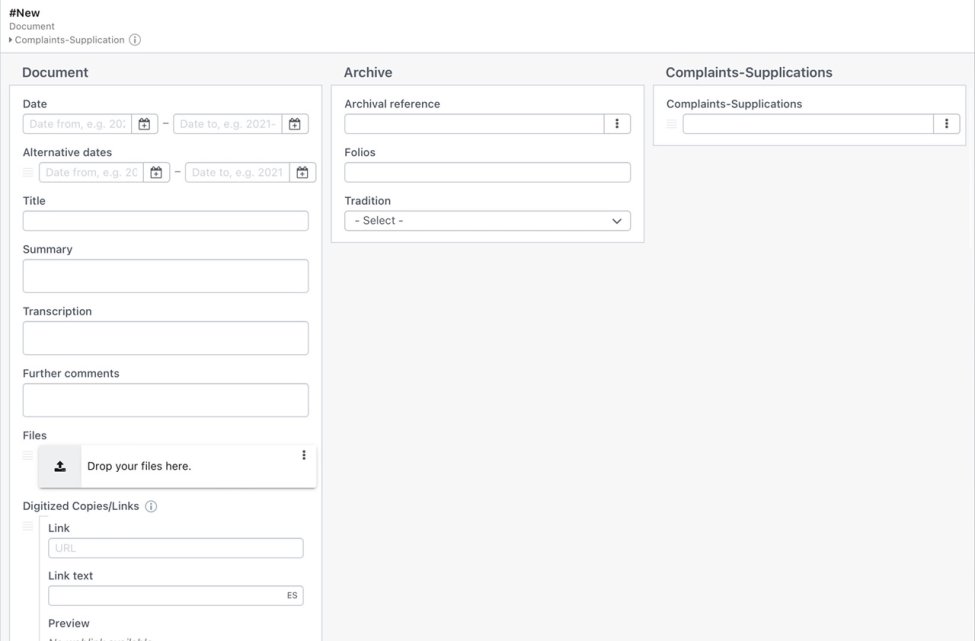
Figure 4
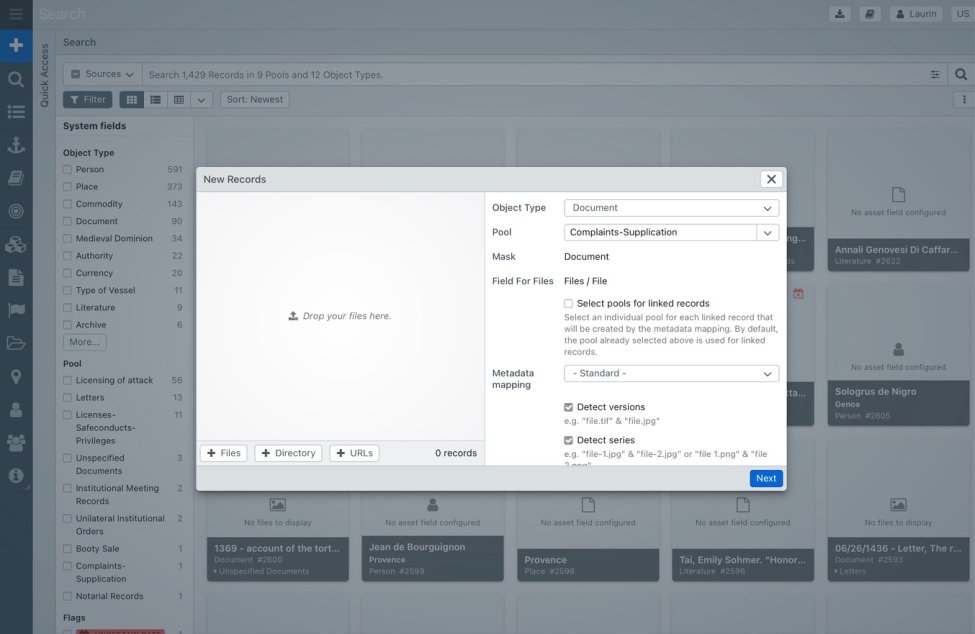
Collaboration/Communication within the project
At the beginning of the second project phase, new communication parameters were defined. The project group decided on a meeting of the project group members every second week to ensure an even workload. While phase one had been characterised by weekly meetings of project group and IT-team, phase two’s goal, the implementation of the DMMP’s excel model into easydb, called for less personal and more virtual communication via email and gitlab. This implementation phase leading to the DMMP’s alpha version was thus characterised by less personal meetings, only six from March to the end of May. Instead, the project group and the UB’s IT-team communicated mostly via email and gitlab, with email correspondence increasing especially in the final stages of the implementation process at the end of May.
When necessary, both groups were able to switch seamlessly back to in person meetings. The benefits of the latter format became apparent especially during phase three of the project. From June to July 2023 project group and IT-team aimed to turn the DMMP’s alpha version into a working beta. In the process, hot button issues regarding findability as well as scientific credibility had to be resolved and translated into sustainable and future proof solutions. It became apparent that to make decisions impacting the core of the DMMP’s model, frequent and immediate meetings were most effective. Another useful tool to improve a model which has been worked on continuously by a select group prooved to be the perspective of a less involved one. An “outsider’s perspective” can indeed be vital for a database’s functionality.
After the main issues had been resolved, programming specific communication between project group and IT-team revolved back to email and gitlab for the rest of July. As in phase one of the project, this ensured inclusive, mutual exchange and support, not least due to the ambition of the project group and the IT-team to avoid delay in answering requests.
DMMP: Project Phase 08/01 – 12/31/2023
Persons involved
Project Group: Nikolas Jaspert (ZEGK), Nabi Bauermeister (ZEGK), Victòria Burguera (ZEGK), Silvia Girona Espino (ZEGK), Laurin Herberich (ZEGK), Viola Herschbach (ZEGK)
Extended Project Group: Victòria Burguera (ZEGK), Jonathan Gaede (FITCH), Laurin Herberich (ZEGK), Nikolas Jaspert (ZEGK), Dominic Kempf (SSC), Leonhard Maylein (UB), Florian Nieser (HCDH), Kilian Schultes (ZEGK), Nils Weiher (UB)
Timeline of the Project
August, September, and October 2023
- Project group enters data while noting errors and potential for improvement
November 2023
- Update 1.0 of the DMMP Beta is implemented: replacement of multiple single text fields with nested tables, i.e. repeatable fields, as well as the introduction of the field “other people involved” in every document OT
- “Bernat Julià” issue is solved by adapting the search settings
- Viola Herschbach (ZEGK) joins the project group
December 2023
- Nabi Bauermeister (ZEGK) joins the project group
Knowledge and data management
On 12 July 2023 the project group had begun the process of entering large amounts of data into the DMMP. On 01 August Silvia Girona Espino joined this effort by entering already cataloged data. Whenever an error or potential for improvement were noticed, the project group members noted the individual instance in a shared document to prevent doubling. In early August a low and a high priority list were handed over to the IT-team as a way to enable prioritisation during the semester brake.
Data entry continued throughout September and October, while the project group evaluated the performance of the DMMP beta. The data gathered in the process which was presented to the IT-team in early November, justified the first update of the working beta. Apart from improvements of the person NSP, update 1.0 included the replacement of multiple single text fields with nested tables, i.e. repeatable fields, as well as the introduction of the field “other people involved” in every document OT as major demands of the project group members. The only larger issue which had to be discussed was the “Bernat Julià” issue, so called after the search term that had uncovered it. Some project group members and some of the IT-team received a different number of results searching for said “Bernat Julià”. After some investigation and during a personal meeting, IT-team and project group discovered that the search settings had been defined differently in respect to languages in each of the individuals accounts. While searching, this caused different results, but was solved rather quickly.
In the second half of November the project group grew further with Viola Herschbach joining as project assistant. Together with Nabi Bauermeister who joined 01 December, Herschbach will be responsible for data extraction from scientific papers and books as well as entry of the respective data into the DMMP. At the same time support from the UB’s IT-team continues, while performance data is continuously collected and historical data entered by the project group.
Figure 1 - Example of an input mask
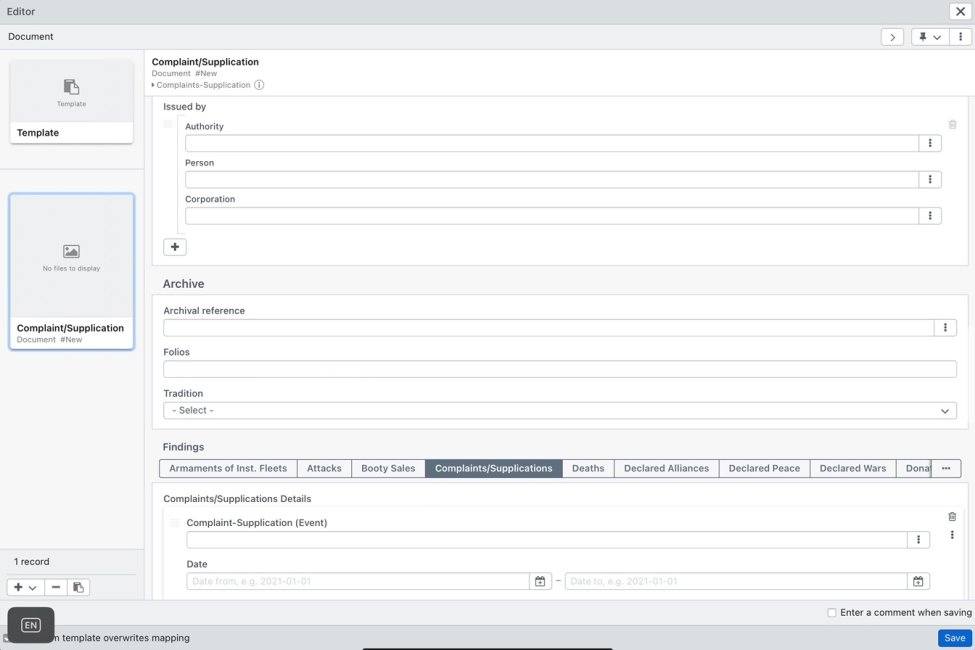
Figure 2 - Another example of an input mask
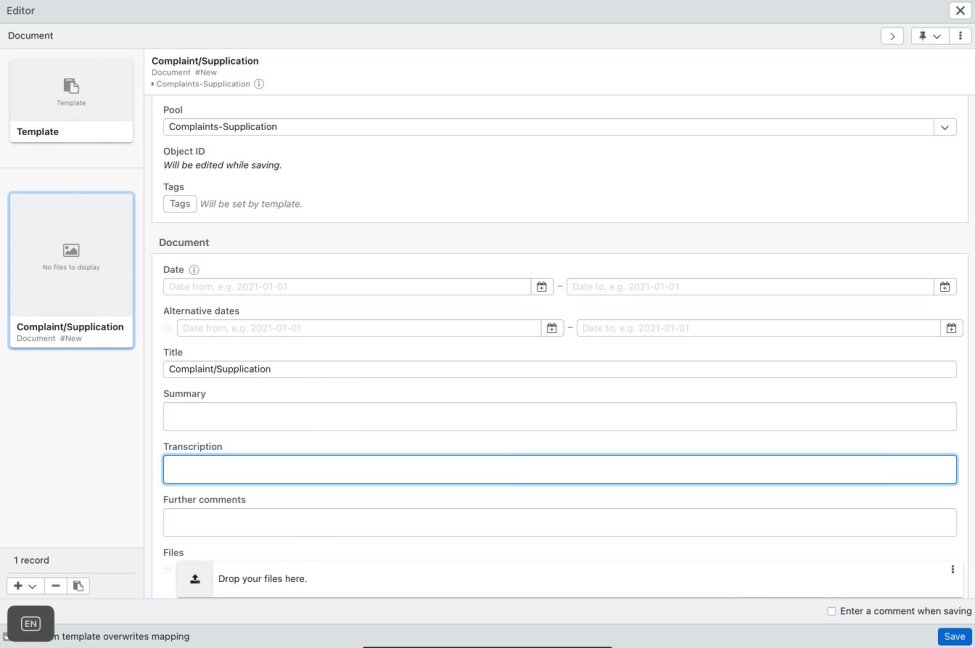
Figure 3 - Example of an input mask with new field "Other people involved"
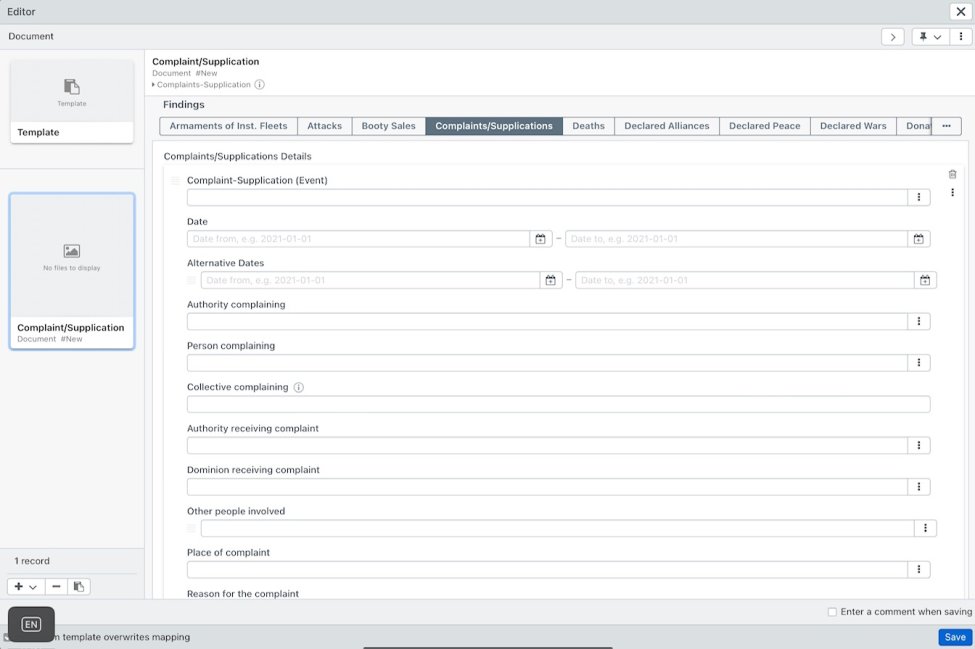
Collaboration/Communication within the project
Throughout phase four the members of the project group mostly continued to meet every second week either virtually or in person. When it came to communication parameters between project group and IT-team, phase four of the DMMP project marked a return to those of phase two. While meetings almost twice a week had been the norm for June and July, after finishing the working beta on 12 July 2023 project group and IT-team returned to some gitlab but mostly email exchanges for smaller issues which occurred during data entry.
After a meeting on 10 August no meetings were held through September and October. A period of more personal meetings began in November, the reason being similar to the one for the high frequency of meetings between project group and IT-team in phase three of the project: Frequent and immediate meetings are most effective when it comes to solving difficult issues. Unlike the findability and credibility issues faced in ten meetings from June to July, the issues solved in the three meetings in November were not difficult, because they touched the core of the DMMP’s model, but complex to explain without at least four eyes facing one screen. The amount of time saved by a quick demonstration turned out to be the true benefit of these meetings.
As in July after project group and IT-team had sorted out the collected smaller issues, both resorted to mostly email communication for the rest of 2023. At this point this in combination with the always available option of a quick virtual meeting ensured real time updates and support.


